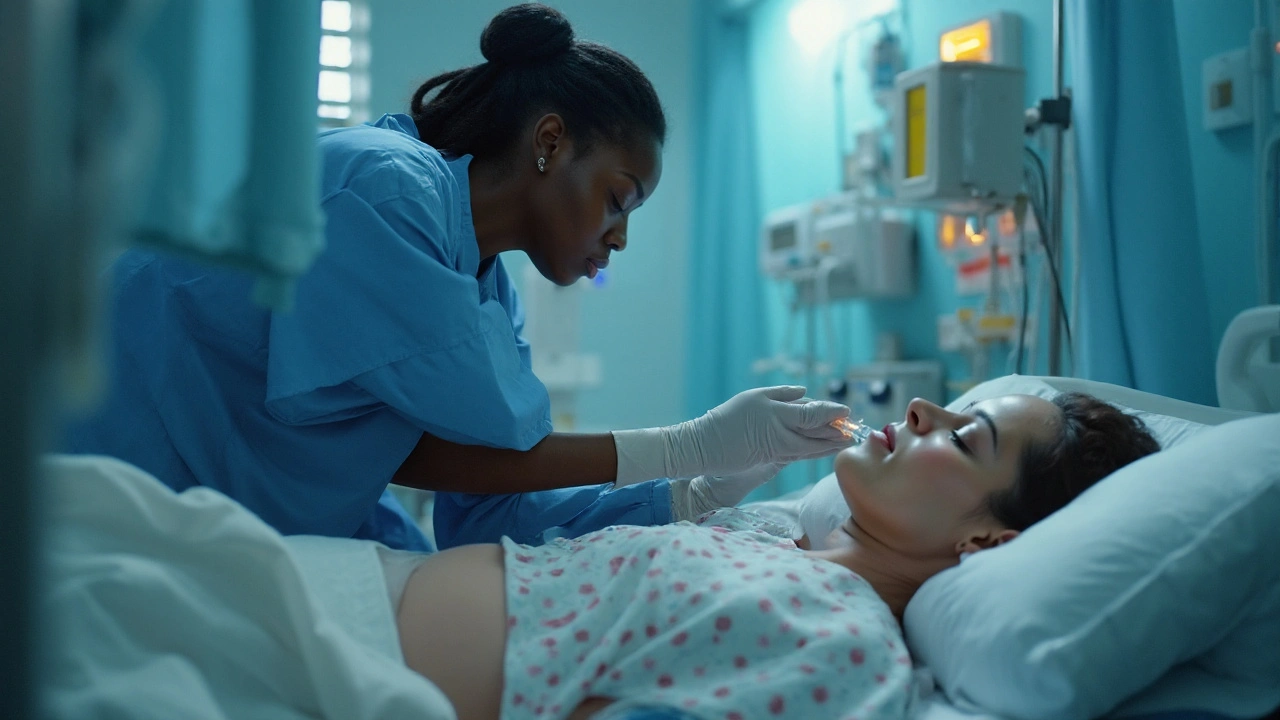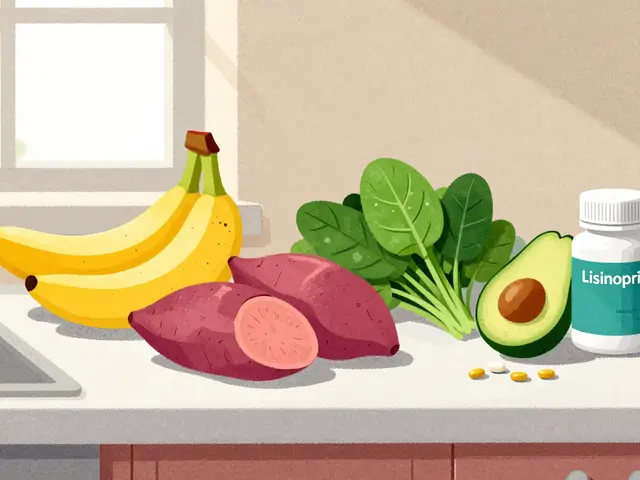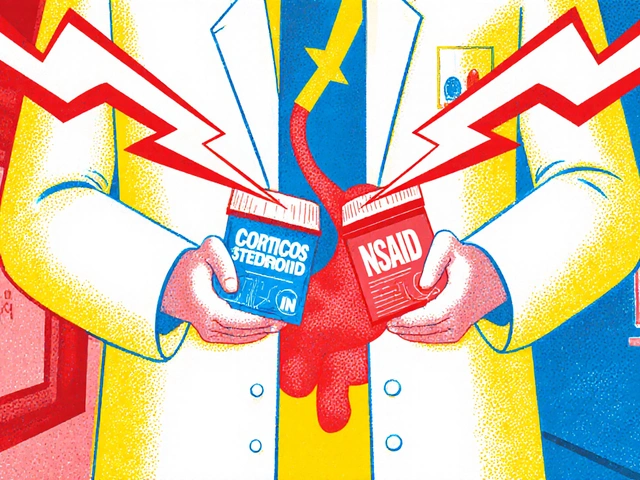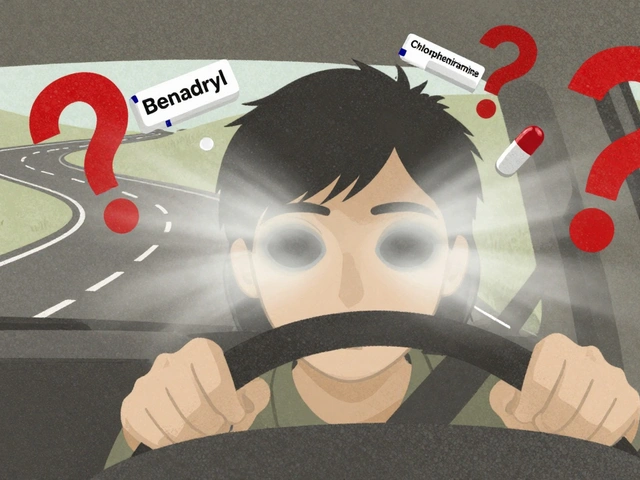One missed bloodstream Candida infection can snowball into multi-organ seeding and hard-to-treat complications-especially if the first drug you pick doesn’t work. This piece links three things that now move together in real life: Candida in the blood, dissemination to organs, and rising antifungal resistance. You’ll get a crisp map of how they connect, what to do in the first hours, when to change course, and the common pitfalls that keep patients sicker than they need to be.
TL;DR: The link between candidemia, dissemination, and resistance
- Candida in the bloodstream is never a contaminant. It signals invasive disease risk and a race against time for source control and right-drug-right-dose.
- Dissemination happens through hematogenous spread, most often from the gut or catheters. Eyes, heart valves, bone, liver, spleen, and skin can seed early.
- Resistance shapes outcomes. Azole resistance is now common in C. glabrata and near-ubiquitous in many C. auris strains; echinocandin resistance is rising, especially after prior exposure.
- First moves: repeat blood cultures, remove/replace central lines if possible, start an echinocandin, identify species fast, and de-escalate or escalate based on susceptibilities and clinical response.
- Treat for at least 14 days after the first negative blood culture and symptom resolution-longer if deep foci remain.
What ties candidemia, dissemination, and resistance (and why this matters now)
Start with a simple truth: candidemia often begins as gut translocation or catheter colonization, then breaks into the bloodstream. Once there, yeast ride the circulation to seed organs. Resistance changes that journey by lowering drug kill at the very moment you need rapid clearance. If blood stays positive or clears slowly, your odds of metastatic foci rise.
Where do these infections start? Common feeders are ICU stays, broad-spectrum antibiotics, abdominal surgery or leaks, parenteral nutrition, steroids, chemotherapy, and central venous catheters. Neonates and transplant recipients sit in a higher-risk lane. The connection to dissemination is mechanical: more time in the blood equals more chances to stick to endothelium and devices. The connection to resistance is biological: azole pressure selects ERG11 mutations and efflux pumps in some species; echinocandin pressure selects FKS mutations. Biofilms on lines and hardware amp up tolerance compared with planktonic cells.
Why the urgency in 2025? Global surveillance keeps flagging tough trends. CDC reports expanding C. auris in healthcare facilities with high azole resistance and pockets of echinocandin resistance (CDC, 2023). ECDC has warned of clonal echinocandin-resistant C. parapsilosis outbreaks in parts of Europe (ECDC, 2024). C. glabrata shows steadily increasing echinocandin resistance in some centers following prior exposure (CLSI/US surveillance 2019-2024). WHO listed C. auris as a critical priority fungal pathogen (WHO, 2022). Translation: empiric choices matter more, species ID matters earlier, and source control is non‑negotiable.
Spot it early: recognition and diagnostic steps
Think “could this be Candida?” any time an unstable ICU patient or post-op patient on broad antibiotics spikes sepsis without a clear bacterial source. Fevers are unreliable; hypotension and organ dysfunction often carry the real signal. Skin clues (macronodular lesions), ocular symptoms, or persistent fevers on antibiotics should nudge you to act.
Step-by-step approach:
- Draw at least two sets of blood cultures (from peripheral and line sites if present), and repeat every 24-48 hours until clear. Time-to-positivity helps but does not rule out candidemia if negative early.
- Start an echinocandin empirically in high-risk, unstable, or azole-exposed patients. Dose examples: caspofungin 70 mg load then 50 mg daily; micafungin 100 mg daily; anidulafungin 200 mg load then 100 mg daily. Adjust for weight and hepatic considerations as per labels.
- Remove or exchange central venous catheters early when feasible. Early removal correlates with faster clearance and better survival (IDSA 2016; multiple ICU cohort analyses).
- Order rapid species ID: MALDI‑TOF on positive cultures, or a rapid panel if available. Ask your lab for reflex azole susceptibility and echinocandin MICs for non-albicans species.
- Use non-culture tests when blood cultures lag or deep infection is suspected: serum beta‑D‑glucan (BDG), Candida PCR, or T2Candida. BDG sensitivity is decent (70-90%) but beware false positives with hemodialysis filters, IVIG, severe mucositis, cellulose products. A negative BDG does not fully exclude invasive disease.
- Screen for dissemination: consider transthoracic echocardiography in most; move to TEE if persistent fungemia, prosthetic valves, or embolic clues. Ophthalmology exam is still recommended in many guidelines for non‑neutropenic patients within the first week, though some centers now reserve it for symptoms due to low yield; decide based on local practice and patient risk (IDSA 2016; institutional updates 2022-2024).
- Source imaging: if abdominal source is likely, get CT or ultrasound. Drain abscesses, debride necrosis, and review any intravascular or orthopedic hardware as potential reservoirs.
Key interpretation rules:
- Any Candida in blood is actionable. Treat and look for a source.
- Species shift the plan: C. glabrata often needs higher azole exposures or stays on echinocandin; C. krusei is inherently fluconazole resistant; C. parapsilosis can show echinocandin MIC creep; C. auris is frequently multidrug resistant.
- Persistent positivity beyond 3-5 days despite therapy means “rethink now”: re-examine lines and hardware, repeat imaging, confirm dosing, and check susceptibilities.

Treat and de-risk: a practical management playbook in 2025
Start broad, narrow fast, and never skip source control. Here’s a clean framework clinicians use at the bedside.
The 4S Framework: Source, Species, Susceptibility, Site.
- Source: remove/replace lines early; drain collections; fix gut leaks.
- Species: push for rapid ID; adjust therapy by anticipated resistance profile.
- Susceptibility: act on MICs when they land; if delayed, adjust by local epidemiology and patient’s prior antifungal exposure.
- Site: if endocarditis, eye, CNS, bone, or hardware is involved, expect longer therapy and different drug penetration needs.
Empiric therapy rules of thumb:
- Unstable, ICU, prior azole exposure, or C. auris risk: echinocandin first-line.
- Stable, no recent azole, low local resistance, and suspected C. albicans: high-dose fluconazole can be considered in select cases, but only with rapid species confirmation and close follow-up.
- Neutropenia, CNS concern, or deep-seated disease where tissue penetration is key: consider liposomal amphotericin B when echinocandin failure or resistance is suspected.
De-escalation and step-down:
- If species is susceptible (e.g., C. albicans susceptible to fluconazole), step down from echinocandin to oral fluconazole after 5-7 days of stability and cleared blood cultures.
- C. glabrata: avoid fluconazole step-down unless susceptibility confirmed and dosing is robust (e.g., high-dose fluconazole or voriconazole per MIC).
- C. krusei: consider voriconazole or amphotericin B; fluconazole does not work.
- C. parapsilosis: be aware of higher echinocandin MICs; if susceptible, azoles are reasonable once stable.
- C. auris: many isolates resist fluconazole and sometimes amphotericin B; echinocandin is usually first choice; if MICs rise or clinical failure occurs, liposomal amphotericin B or combination therapy may be needed (ECMM/ISHAM guidance 2020-2023).
Duration and monitoring:
- Uncomplicated bloodstream infection: treat for at least 14 days after the first negative blood culture and symptom resolution.
- Endocarditis, osteoarticular infection, or CNS involvement: expect weeks to months; combine with surgical management as feasible.
- Repeat blood cultures every 24-48 hours until documented clearance.
- Watch liver and renal function; azoles interact with many drugs (calcineurin inhibitors, warfarin, certain antiarrhythmics). Echinocandins have fewer interactions but watch for hepatic enzymes with caspofungin.
When to suspect resistance right now:
- Prior exposure to the same antifungal class in the last 3 months (especially echinocandins with C. glabrata).
- Persistent fungemia beyond 3-5 days despite source control and therapeutic dosing.
- Species known for resistance: C. auris (azole ± amphotericin B resistance common), C. glabrata (azole and rising echinocandin resistance), C. parapsilosis (clusters of echinocandin resistance in some regions).
What to do if resistance is likely or confirmed:
- Escalate therapy: switch class (e.g., echinocandin to liposomal amphotericin B), or consider combination therapy when guided by expert consultation.
- Get expert help: Infectious Diseases consult and lab consultation for repeat MICs and, if available, FKS/ERG11 mutation testing.
- Re-audit source control: re-image, pull or exchange more lines, evaluate hardware.
Mechanisms in plain language:
- Echinocandins: resistance via FKS1/FKS2 mutations, reducing drug target binding; often emerges after exposure.
- Azoles: ERG11 target mutations plus efflux pumps (e.g., TAC1, PDR1 pathways) push drug out of the cell.
- Biofilm: yeasts on plastic or tissue make protective matrices that blunt drug effect even without classic resistance.
| Species | Typical features | First-line (empiric) | Resistance notes (2020-2025) | 30-day mortality (range) |
|---|---|---|---|---|
| C. albicans | Most common historically; often from gut or lines | Echinocandin in unstable; fluconazole possible if stable and low resistance | Azole resistance exists but lower than non-albicans in many regions | 20-30% |
| C. glabrata | Older age, prior azoles; slower grower | Echinocandin | Azole resistance common; echinocandin resistance rising (prior exposure risk) | 30-50% |
| C. parapsilosis | Line-associated; neonates; biofilm-prone | Echinocandin or fluconazole depending on local data | Clusters of echinocandin resistance reported in some countries | 15-25% |
| C. krusei | Intrinsic fluconazole resistance | Echinocandin or voriconazole | Fluconazole never works | 30-40% |
| C. auris | Healthcare outbreaks; skin colonizer | Echinocandin | High azole resistance; amphotericin B resistance in some; echinocandin resistance emerging | 30-60% (varies by cohort) |
Notes: Rates vary by region, patient mix, and outbreak dynamics. Check your local susceptibility reports and national alerts (CDC 2023; ECDC 2024; WHO 2022).
Examples, decision trees, and a quick-reference checklist
Scenario 1: ICU patient with septic shock, TPN, central line, broad antibiotics, BDG pending, first blood culture growing yeast.
- Action: start echinocandin, remove line, repeat cultures in 24-48 hours, request rapid species and susceptibilities. If stable by day 4 and C. albicans susceptible to fluconazole, consider step-down.
- Watch-for: if cultures remain positive on day 4-5, get TEE, re-image abdomen, look for hidden abscess, and consider liposomal amphotericin B if clinical response lags.
Scenario 2: Post-op abdominal leak, fever, prior fluconazole prophylaxis, blood culture C. glabrata.
- Action: echinocandin as first-line; ensure source control with drainage/repair. Do not step down to fluconazole unless MIC supports it and dose is high enough.
- Watch-for: echinocandin resistance after prior exposure-if persistent fungemia, escalate drug class and re-check every potential nidus.
Scenario 3: Long-term care resident transferred with MDR colonization history; blood culture C. auris suspected by MALDI.
- Action: contact precautions per facility policy; start echinocandin; request full susceptibility panel; notify infection prevention. If echinocandin MIC elevated or clinical failure, switch to liposomal amphotericin B; consider combination under expert guidance.
- Watch-for: skin colonization leading to environmental contamination; work with IP for cleaning protocols.
Fast decision tree (text version):
- Yeast in blood? → Start echinocandin + remove/exchange CVC if feasible → Push for rapid species ID.
- Species susceptible to fluconazole and patient stable? → Step down after 5-7 days and negative cultures.
- Persistent positivity day 3-5? → Reassess source control + TEE if risk + imaging → Verify dosing/MICs → Consider amphotericin B or combination.
- Deep focus (endocarditis/CNS/bone) → Prolonged therapy + surgical consult.
Quick checklist (printable):
- Repeat blood cultures until clear (q24-48h).
- Remove or exchange central lines early if possible.
- Start echinocandin; adjust when susceptibilities land.
- Look for dissemination: heart, eye, abdomen, bone.
- Set duration: 14 days after first negative culture (uncomplicated), longer if deep foci.
- Document drug interactions and organ function trends.
- Loop in ID and Infection Prevention when resistance or C. auris is suspected.
Pitfalls to avoid:
- Treating single positive blood cultures as contamination-Candida is not a contaminant.
- Delaying line removal in a stable patient-each day can extend fungemia.
- Assuming all Candida behave like C. albicans-species really matter.
- Stopping therapy before 14-day post-clearance mark-relapse risk climbs.
- Ignoring pharmacokinetics-underdosing azoles in obesity or renal replacement leads to failures.
Mini‑FAQ and next steps
What’s the current first-line for most suspected invasive Candida in the ICU?
An echinocandin, given rising azole resistance and severity at presentation. De-escalate based on species and MICs when the patient stabilizes.
Do I still need an eye exam for every patient?
Classic guidance recommends a dilated exam for non-neutropenic patients within the first week. Some centers limit exams to symptomatic cases because the yield is low in asymptomatic patients; follow your institutional policy and discuss with ID/Ophthalmology.
How long should I treat uncomplicated bloodstream infection?
At least 14 days after the first negative blood culture and symptom resolution, assuming source control and no metastatic disease.
When should I suspect echinocandin resistance?
Persistent fungemia after 3-5 days on therapy with good source control, prior echinocandin exposure, or species at risk (C. glabrata, C. auris, C. parapsilosis in outbreak settings). Talk to the lab about FKS testing if available.
What about prophylaxis in high-risk units?
Some hematology/ICU settings use targeted prophylaxis based on local data. This can shift species pressure, so stewardship and surveillance are key. Follow local protocols and reassess yearly.
Which sources back these recommendations?
Major references include IDSA Clinical Practice Guidelines for Candidiasis (2016, with ongoing institutional updates), ECMM/ISHAM guidance for C. auris (2020-2023), CDC surveillance reports (2023), ECDC alerts (2024), CLSI breakpoints and US surveillance (2019-2024), and the WHO fungal priority pathogen list (2022).
Next steps for different roles:
- ICU/ward clinicians: build a standing order set-repeat cultures, early echinocandin, catheter removal, ID consult trigger if cultures positive at 72 hours.
- Pharmacists: track azole interactions, monitor echinocandin-micafungin dosing in obesity, and flag prior echinocandin exposure for resistance risk.
- Micro labs: speed species ID with MALDI‑TOF; auto-reflex MICs for non-albicans; maintain a rolling 12‑month Candida antibiogram.
- Infection Prevention: reinforce C. auris screening and environmental cleaning in high-risk units; coordinate contact precautions and inter-facility communication.
Troubleshooting quick hits:
- Still positive on day 5: confirm doses, check for missed doses, assess drug levels when relevant (e.g., voriconazole), re-image, pull extra lines, get TEE, consult ID, consider amphotericin B.
- Worsening renal function on amphotericin B: switch to liposomal formulation if not already; revisit need for combination therapy; optimize hydration; reassess target site.
- Patient improving but MICs suggest higher azole dose: step down carefully, use high-dose regimens per MIC, monitor LFTs and interactions.
- Suspected C. auris: notify lab to confirm ID; alert Infection Prevention; ensure contact precautions and cleaning with active agents against C. auris.
If you remember just three things: pull the line if you can, start the right antifungal fast, and don’t stop until 14 days after clearance unless a deep focus pushes you longer. Resistance is not a twist ending; it’s part of the plot now. Plan for it from the first dose.








12 comments
Shubham Singh
Wow, this is the kind of post that makes me want to scream into a pillow. Candida isn't a contaminant? Tell that to every med student who got docked points for overtreating 'contaminants' in their rotations. I've seen patients die because someone thought it was just 'dirty blood'-now we're supposed to panic and start echinocandins like it's a SWAT team raid? And don't get me started on C. auris-it's like the zombie fungus from a bad horror movie and nobody's prepared.
Hollis Hamon
This is incredibly thorough. I appreciate how you tied resistance patterns to real-world clinical decisions. The 4S framework is clean and actionable-especially the emphasis on source control. Many of us in community hospitals don’t have MALDI-TOF on hand, but even basic species recognition via morphology and history can change outcomes. Thanks for the clarity.
Adam Walter
Let me just say-this isn’t just a clinical guide; it’s a manifesto for modern infectious disease practice. You’ve distilled chaos into coherence. Candidemia isn’t ‘a yeast in the blood’-it’s a declaration of war from a pathogen that’s been quietly evolving while we were busy chasing MRSA. Echinocandins? Not a preference-it’s a moral imperative now. And let’s not romanticize fluconazole like it’s the knight in shining armor-it’s the guy who shows up late, forgets his sword, and blames the dragon for being too tough. The biofilm point? That’s the silent assassin. Plastic catheters aren’t just foreign bodies-they’re fungal condos. And C. auris? It doesn’t just resist drugs-it resists *hope*. We’re in the age of fungal realism now. No more fairy tales. Just MICs, margins, and midnight TEEs.
Gurupriya Dutta
I’ve been working in a rural hospital in India where we rarely get species ID results in under 72 hours. This post made me realize how much we’re flying blind. I’ve been starting fluconazole out of habit, but now I’m going to push for echinocandins even if we can’t confirm the species right away. Thank you for the practical checklist-I printed it out and taped it to my desk.
Michael Lynch
It’s wild how much we’ve learned-and how much we still don’t know. I remember when Candida was just ‘C. albicans’ and we’d treat it like a mild annoyance. Now it’s this whole ecosystem of resistance, biofilms, and species-specific nightmares. Honestly, I feel like we’re playing chess against a fungus that’s been studying us for decades.
caroline howard
Oh sweet mercy, another ‘clinicians need to know’ article that reads like a textbook written by someone who’s never seen a real patient. You want me to remove every central line? Even the one the patient just got after open-heart surgery? And who’s going to pay for the TEE when the insurance company says ‘it’s not medically necessary’? You know what’s worse than candidemia? The healthcare system that makes this protocol impossible to follow.
Melissa Thompson
Let’s be clear: this is why America’s healthcare system is superior. In other countries, they’re still using outdated protocols, ignoring resistance patterns, and letting patients die because they’re too cheap to run MALDI-TOF. Here? We’ve got the data, the drugs, and the discipline. If you’re not using an echinocandin as first-line in your ICU, you’re not just behind-you’re endangering lives. And yes, C. auris is a global threat, but only because other countries refuse to adopt our standards. This guide? It’s not just good-it’s American excellence in action.
Rika Nokashi
As someone who has been practicing for over 25 years, I must say this article is overly simplistic and dangerously reductionist. You speak of echinocandins as if they are a panacea, yet you ignore the fact that in many Indian hospitals, even fluconazole is scarce. You speak of MICs and MALDI-TOF as if every hospital has access to them, but in reality, most of us are working with Gram stains and clinical intuition. You also dismiss the role of nutrition, hygiene, and basic sanitation-factors that matter more than any antifungal in resource-limited settings. This is not medicine-it is elitist fantasy dressed in jargon.
Don Moore
Thank you for this comprehensive overview. The 4S framework is particularly valuable for training residents. I’ve incorporated this into our institutional protocol and seen a measurable reduction in time-to-initiation of appropriate therapy. The emphasis on early line removal and repeat cultures has been transformative in our ICU. Please continue sharing these evidence-based, clinically grounded resources.
Austin Levine
Just read this. Changed my mind. Starting echinocandin first now. No more guessing.
Matthew King
bro this is wild. i had a patient last week with candida and i just gave fluconazole cause it was easy. now i feel like a caveman. i’m gonna start asking for rapid ID and yanking lines. also c. auris sounds like a villain in a video game.
Andrea Swick
I’ve been hesitant to push for echinocandins in stable patients because of cost and concerns about resistance, but this laid out the risk-benefit so clearly. The part about persistent fungemia being a red flag for resistance-even if the patient seems okay-is something I’ll be paying closer attention to now. Thanks for the nuanced take.